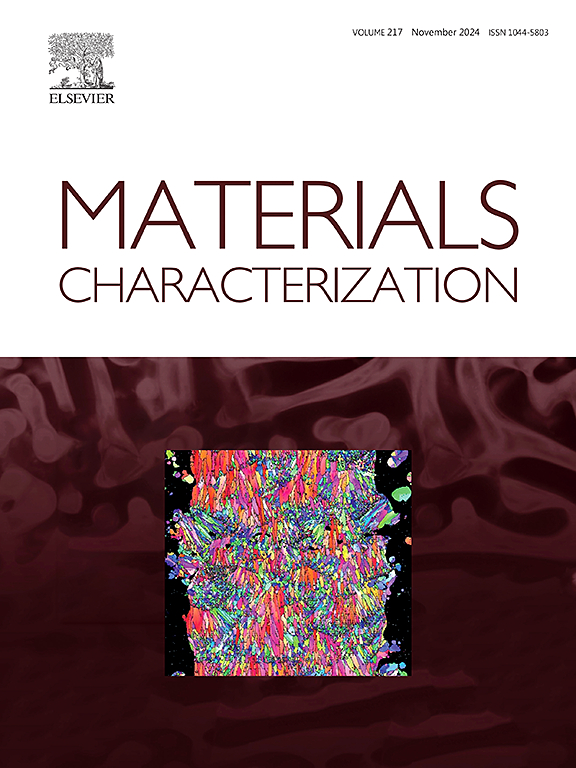Additive manufacturing of a crack-free tool steel with high C and Cr contents: Microstructure and mechanical properties
IF 4.8
2区 材料科学
Q1 MATERIALS SCIENCE, CHARACTERIZATION & TESTING
引用次数: 0
Abstract
Martensitic Cr steels are valued in tool steel applications for their polishability and balanced mechanical properties at high temperatures. Traditionally produced using conventional methods, these steels can benefit from additive manufacturing (AM), which allows for adjustments in component shape and microstructure. However, AM techniques have rarely been used for martensitic Cr steels due to their susceptibility to cracking caused by the elevated carbon contents. Hence, this study aimed to produce a crack-free, fully dense martensitic Cr steel with up to 20 wt% Cr via laser beam powder bed fusion (LB-PBF), using a platform preheated to 200 °C. A design-of-experiments model was implemented for 18 cubic samples, varying laser power, scanning speed, and hatch distance. Metallographic analysis revealed a crack-free microstructure for all samples. The best parameter set achieved a remarkable relative density of 99.99 %, printed at a volumetric energy density of 72 J/mm3. Using this parameter set, larger samples were printed for detailed material characterization in both the as-built (AB) and the heat-treated (HT) condition, after austenitization, quenching and three tempering steps. Mechanical properties were evaluated through tensile and hardness tests, while microstructure analysis employed scanning electron microscopy, electron backscatter diffraction, and X-ray diffraction. Results revealed a homogeneous microstructure, primarily consisting of fcc-Fe phase in the AB condition and bcc-Fe phase in the HT condition, with mechanical properties comparable to conventionally produced martensitic Cr steels. This comprehensive characterization provided a thorough understanding of the microstructure and mechanical properties of the 3D-printed martensitic Cr steel in both the AB and HT conditions.

求助全文
约1分钟内获得全文
求助全文
来源期刊

Materials Characterization
工程技术-材料科学:表征与测试
CiteScore
7.60
自引率
8.50%
发文量
746
审稿时长
36 days
期刊介绍:
Materials Characterization features original articles and state-of-the-art reviews on theoretical and practical aspects of the structure and behaviour of materials.
The Journal focuses on all characterization techniques, including all forms of microscopy (light, electron, acoustic, etc.,) and analysis (especially microanalysis and surface analytical techniques). Developments in both this wide range of techniques and their application to the quantification of the microstructure of materials are essential facets of the Journal.
The Journal provides the Materials Scientist/Engineer with up-to-date information on many types of materials with an underlying theme of explaining the behavior of materials using novel approaches. Materials covered by the journal include:
Metals & Alloys
Ceramics
Nanomaterials
Biomedical materials
Optical materials
Composites
Natural Materials.
 求助内容:
求助内容: 应助结果提醒方式:
应助结果提醒方式:


